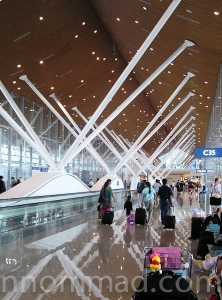In the old days, the only place to shop was a physical store (aka “bricks & mortar” stores). Going way back, most folks purchased their goods from a handful of different store types, including the grocery store (or “market”), the pharmacy, the department store, and maybe a “five & dime” store that carried a little bit of everything. Going way, way back, folks made purchases from the local general store and the Sears & Roebuck catalog.
When the business of retailing started getting into full swing, retailers began emphasizing service. There are many storied references to amazing customer service moments, including the clerk at Seattle-based Nordstrom who took a return of tires even though the store never sold them. Or, department store magnate Marshall Field, whose Chicago department store was a bastion of fine service and whose slogan was “give the lady what she wants.” These retailers – and many others – understood that providing exceptional service was part of the shopping experience.
The service economy of the 21st century is one that emphasizes so much more than simply providing exceptional customer service. In fact, “customer service” is often defined as nothing more than the basic operational functions of a clerk taking an order; a bellman handling one’s luggage; or a bank teller handling a deposit. Rather, “service” has evolved into “experience,” where experience includes all aspects of a consumer’s interaction with the business or brand. The two often work hand-in-hand, but it’s ultimately the experience that makes the difference it today’s competitive, consumer-driven environment. From the moment a business is entered, a web site is visited, or a passenger arrives at the airport, it’s time for the business to begin delivering on its marketing promise and reputation.
Air travel is rarely exciting or an adventure any longer; for many people, it’s even a commute to work. Asian air carriers and airport operators understand this, though, and work hard at delivering a unique & memorable experience for travelers. Malaysia Airlines, consistently ranked as one of the world’s top airlines, lets travelers check their luggage at the downtown Kuala Lumpur train station. From there, luggage and their passengers travel in comfort by train to Kuala Lumpur airport, ranked one of the world’s most beautiful airports by Travel & Leisure magazine. At KUL, passengers have an array of international shops & restaurants from which to choose, or they can simply relax in the atrium with its own greenhouse of tropical plants. The airport’s services, architecture, layout, and staff all come together to make a typically unpleasant experience something exceptionally enjoyable.
While customer experience is built on many factors, employee interaction with consumers can make or break the experience. For many, the best price, a great location, or a wonderful design can be ruined by a poor interaction. Department store retailer Kohl’s understands this. Its employees make it easy for shoppers to redeem discounts and are even known to accept an expired coupon when a customer asks.
Even online or over the phone, the human interaction is critical and customers expect quick responses and accurate answers to questions. L.L. Bean knows, and makes the customer experience very positive with its unconditional guarantee and free shipping everyday. In 2010, the retailer was named #1 in terms of customer service by BusinessWeek.
Experience matters. For businesses that depend on customers, the experience can be a matter of success or failure.










